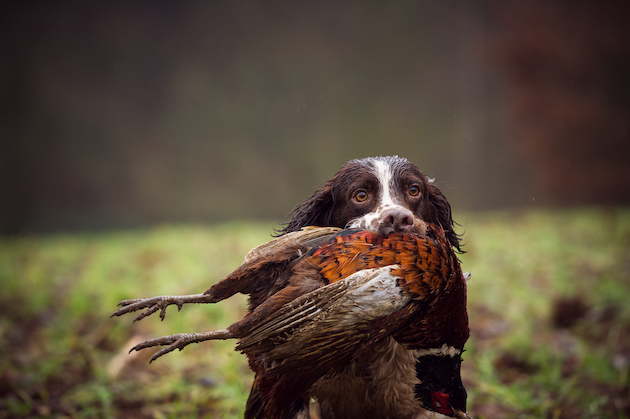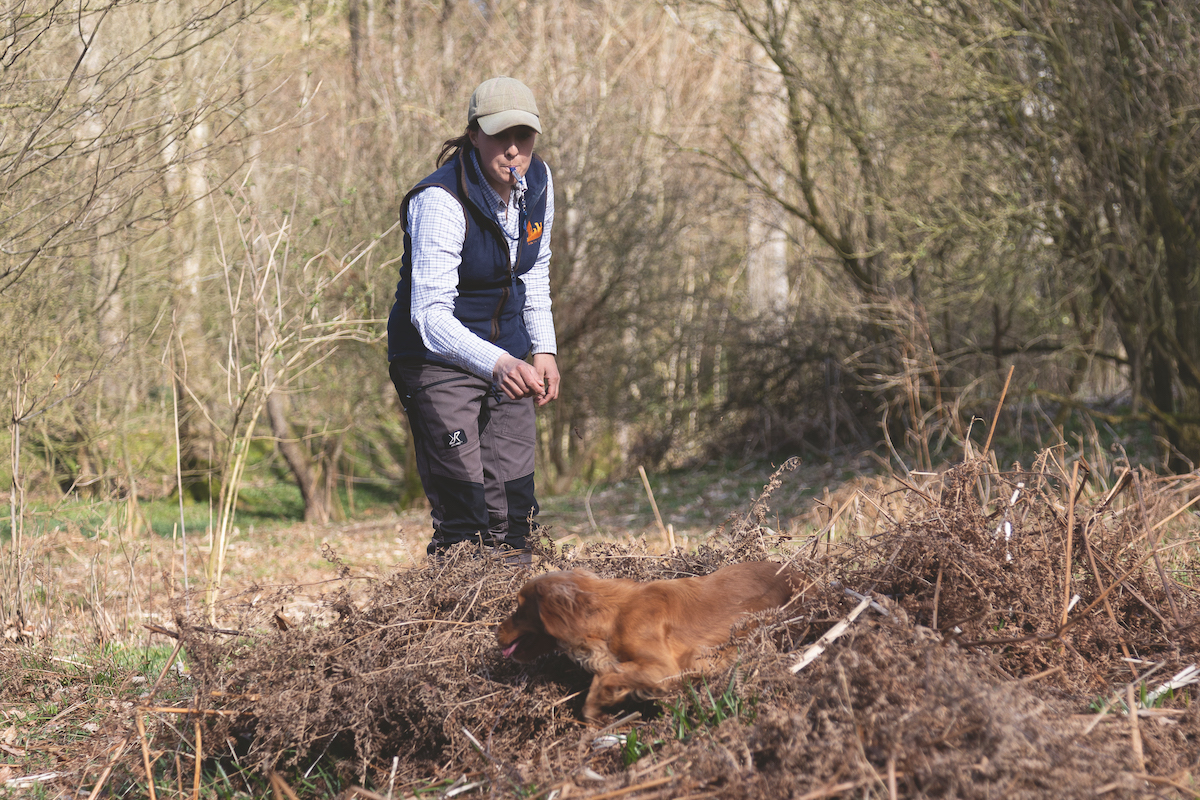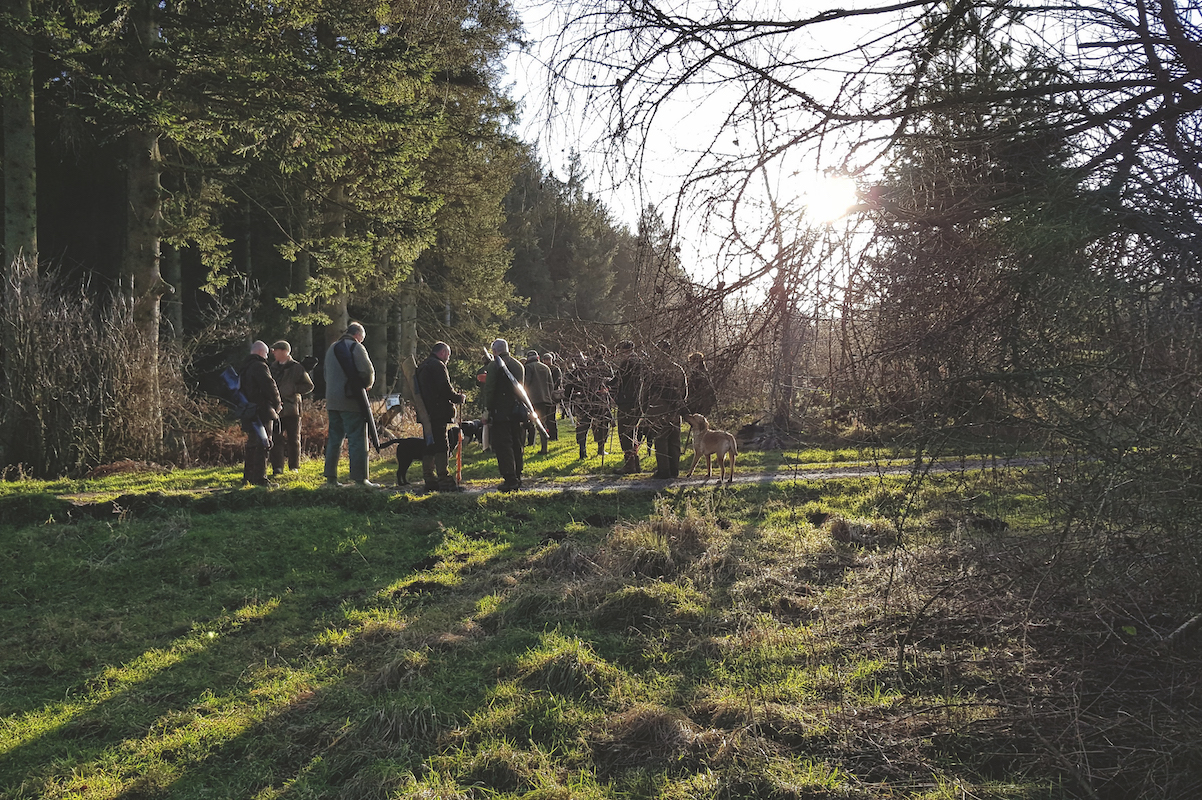Gundog running-in: the cause and the solution
Curing this bad habit in a gundog

A shot pheasant being picked up Cocker spaniel
What does a gundog running-in actually mean? It’s a bad habit when a dog decides for itself (without any instruction) that it’s going to go off and hunt, flush and retrieve birds. It tends to be a habit in over-confident dogs that have been allowed to have their own way too often.
You can be avoid having this first place by giving the young working dog sound, steady and patient training before it ever ventures out into the field.
Reader problems with a gundog running-in
I recently received this letter from a reader.
Q: I have a black Labrador gundog who is 22 months old. His training had gone well until he recently started running in to shot birds and I discovered I had a gundog running-in problem. He has no issues at all with thrown dummies or the dummy launcher. I’ve been taking him out to shoot pigeons but sometimes, when I’m not getting a lot of shots, it makes it more difficult to try and deal with this issue.
Also how do I get him to stop chasing after hares and roe? When I am shooting pigeons he will sit beside me with no problems.
I have been told to be hard on him and to use an electric collar – I have no intention of doing either. (Read our advice on the best gundog training kit.)
What’s the matter?
A: There are two issues here. As your gundog appears to be steady to thrown dummies and the dummy launcher, and remains steady when you aren’t getting any shots, he clearly has accepted some part of his training.
In reality he still believes he has the upper hand and can take it upon himself to run in. No one can train a gun dog to perfection but I would suggest that there are other things in his life that you ask him to do that he either doesn’t do or that he does in his own time.
Stopping a gundog running-in
- You must make sure that whatever you ask him to do he does it – be that waiting while you go through a gate, getting in and out of the car or coming when called – they may seem like small things but you have to be 100% in control at all times and he must respond to you immediately.
- Although the running in is a major problem to you, to him it is just another of those little things that he probably gets away with on a daily basis. So I would take a look at everything you do with him and demand 100% response as soon as a command is given.
- You now have to make him understand that running in when a shot is fired is unacceptable and at this age it’s going to have to be done in a situation that re-creates the problem scenario.
- You can’t expect to shoot and train him at the same time to overcome this problem so, assuming that it’s the sound of gunfire or the falling bird that triggers the running in, I would suggest you take him out with a friend who is shooting while you concentrate on the dog.
- Once you start this correction procedure you can never allow him to run in without making it plain that it’s something he must not do, so you need some method – like a long lead – to be able to stop his actions and then chastise him.
- You will have to be very firm with him about this and never let him run in to a shot bird and get away with it.
- Administering your disapproval when he returns with a retrieve will achieve nothing and only introduce more problems.
If you ever let him get away with it during this re-training period you will be back to square one. It may take some time and will clearly mean your shooting has to take a back seat while you get this sorted if you really want to get on top of it.
Regarding chasing hare and roe, again this is a dog who has been allowed to get away with it in the past so try and find a trainer with a rabbit pen that has plenty of distractions to enable you to make sure he knows, in no uncertain terms, that chasing anything is unacceptable.
Chasing roe can’t be simulated but I believe that if you can move on to a stage with this dog where he knows that when you say no you really do mean no – whatever the situation – you will be able to have the control you need in all situations.
You clearly have a good relationship with this dog but he has actually got the upper hand in a very subtle way and you need to make sure he knows that you are totally in control. It will not undermine your relationship with the dog but will actually enhance his respect for you.
Would you use a corkscrew to stop your dog running in?
By all means use a ‘corkscrew’ if you must but I prefer to teach a dog to sit quietly at the peg, and only retrieve when commanded to do so.
Steadiness is something that is imparted during training but it can be reinforced during the drive by sitting the dog two or three yards in front thereby allowing you to keep your eye on the dog, and enough time to correct it should it try to run in.
Another aid is a thumb-hole stick which you push firmly into the ground attached to a lead that’s then draped over the dog’s head.
Dog handlers that do a lot of picking up with their dogs can soon undo the steadiness that’s needed at a peg so to prevent this happening avoid all temptation by popping the lead on a young dog and only let it go for the retrieves you choose.








